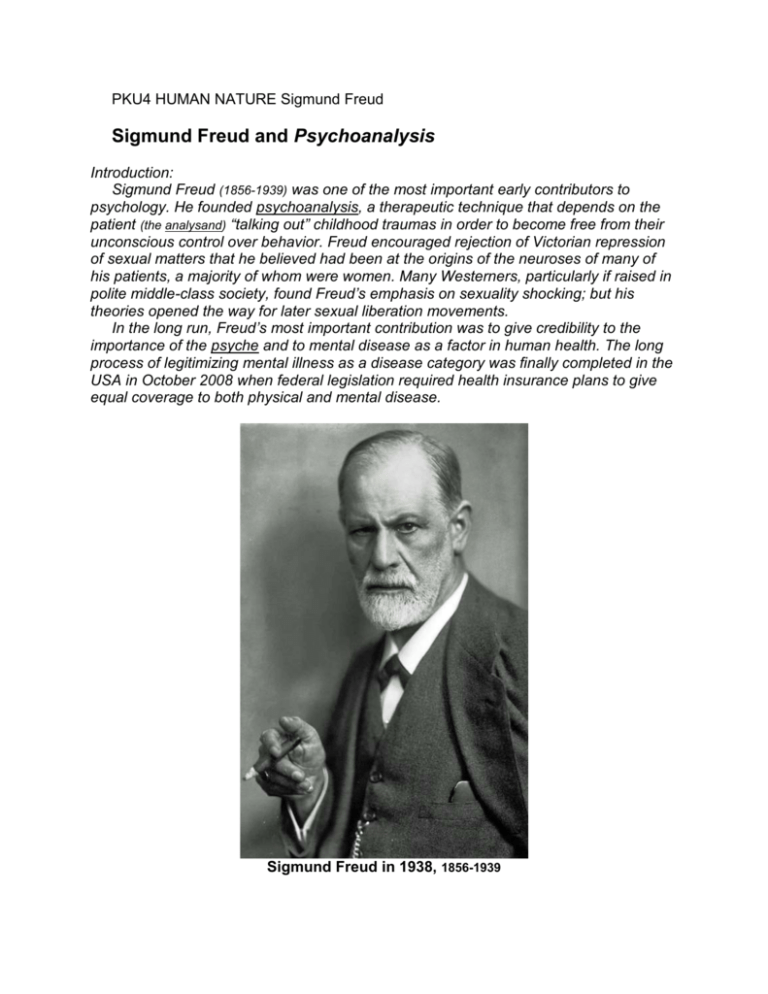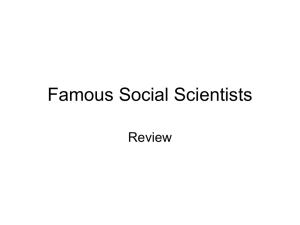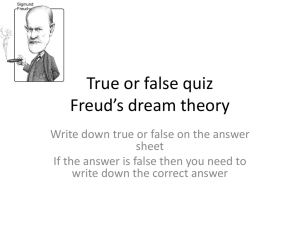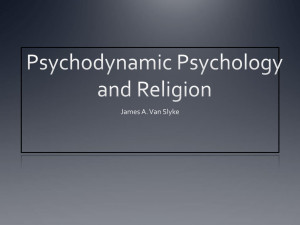
PKU4 HUMAN NATURE Sigmund Freud
Sigmund Freud and Psychoanalysis
Introduction:
Sigmund Freud (1856-1939) was one of the most important early contributors to
psychology. He founded psychoanalysis, a therapeutic technique that depends on the
patient (the analysand) “talking out” childhood traumas in order to become free from their
unconscious control over behavior. Freud encouraged rejection of Victorian repression
of sexual matters that he believed had been at the origins of the neuroses of many of
his patients, a majority of whom were women. Many Westerners, particularly if raised in
polite middle-class society, found Freud’s emphasis on sexuality shocking; but his
theories opened the way for later sexual liberation movements.
In the long run, Freud’s most important contribution was to give credibility to the
importance of the psyche and to mental disease as a factor in human health. The long
process of legitimizing mental illness as a disease category was finally completed in the
USA in October 2008 when federal legislation required health insurance plans to give
equal coverage to both physical and mental disease.
Sigmund Freud in 1938, 1856-1939
To keep in mind as you read: how relevant is Freud’s thought today?
Text:
Freud and the Unconscious
Freud’s theory was that the human mind contains hidden dimensions that are only
partially accessible to consciousness, through indirect means such as dreams or
neurotic symptoms. The Unconscious he saw as a repository of repressed desires,
feelings, memories, and instinctual drives, many of which have to do with sexuality.
Freud argued that our mental lives derive largely from biological drives, from instinctual
urges toward pleasure and away from pain. As each child grows and enters first the
family, then the larger society, he or she learns to repress those instinctual drives and
the desires that express them. Growing up means learning to manage aggressive and
sexual impulses. It also implies getting beyond an infantile sense of self-importance.
Repression of unacceptable impulses is essential to civilization, says Freud, required by
the need to live with others.
Freud, rather like Plato [link: text], imagined that every human being includes a threepart psyche: the conscious part of the person, the ego, was trying to balance the claims
of two forces which remain largely unconscious: an animal part, the id, tempting one
toward immediate pleasures, and the superego, the conscience-driven higher self, the
product of received principles of morally correct behavior. The Unconscious, if not
understood and controlled, led the ego to actions that were harmful to the person in his
or her real life circumstances.
During waking hours the ego, the consciousness of the person, tries to satisfy the
competing claims of the instinctual drives (the Id) and the superego (conscience),
typically without the person being aware of the censorship exercised by the ego. In
dreams or in apparently innocent verbal mistakes, however, a person might reveal what
was hidden. Freud’s therapy aimed to free a person from pathological (sick) or
compulsive behavior by releasing the hidden memories from the Unconscious so that
they no longer dominated the person’s life. One patient, for example, experienced a
recurring fear of animals that turned out, through analysis of his free associations of
thoughts, to refer to his childhood fear of his father, something he had repressed and
forgotten. Freud gave the name of psychoanalysis to this “talking cure.”
Freud and Neurosis
Freud spent most of his life studying the dynamic tensions between the conscious
self or ego and the powerful drives buried in the Unconscious. Here is a diagram that
Freud published in 1933 to explain how he saw the psyche:
[Source: “The Dissection of the Psychical Personality,” in The Complete Introductory Lectures on
Psychoanalysis, ed. and trans. James Strachey, New York: Norton, 1966, 542.]
The id, totally buried in the unconscious mind, contained much of the psyche’s energy,
a combination of sexual libido and other instincts, such as aggression, that propel the
human organism through life. Those primary life processes are entirely irrational. They
cannot distinguish between reasonable objects and unreasonable or socially
unacceptable ones. It is the secondary processes of the mind, prompted by the
superego (conscience), that bring reason, order, logic, and social acceptability to the
otherwise uncontrolled and potentially harmful realm of the basic drives. Neurosis
occurs when a person’s equilibrium is so disturbed by these hidden conflicts that normal
living has become impossible. Note that the very top of this diagram represents the area
Freud allocated to perception and consciousness, which is why he thought most of our
psychological life remains out of mind and can only be accessed with difficulty, as under
therapy.
Freud and Sexuality
Freud insisted that sexuality was active from childhood on because children are
“polymorphously perverse”; that is, naturally seeking satisfaction in any form regardless
of politeness or morality. Freud claimed that the libidinal energy of sexuality is initially
not genital but oral or anal. Also this libido can be displaced onto substitutes. In one
famous case study, Freud analyzed an obsessional neurotic (known as the "Wolf Man"
because of a recurrent dream about wolves in a tree staring at him) who developed a sexually
driven fondness for military dress in response to early traumatic experiences regarding
his sexual identity. His anxiety provoked him to displace his sexual drive onto substitute
objects (fetishes).
At the core of Freud’s sexual theory is the so-called Oedipus Complex, something all
children are supposed to experience as a rite of passage to adult gender identity. As a
man of his time, Freud was primarily concerned with the Oedipal trajectory of males. All
young boys, Freud argued, experience an early attachment to the mother that is
fundamentally sexual in nature. Only the father’s presence, separating mother from
child, prevents incest. Freud claims that all civilization is founded on the prohibition
represented by the father’s intervention. When the male child learns to give up his initial
“pre-Oedipal” desire for and attachment to the mother; he then identifies with the father
(instead of longing to be the father with his mother). He learns to desire women other
than the mother. If all goes well, he will in the long run become an adult male
heterosexual (Freud’s implicit norm). Similarly, the female child experiences an early
desire for the father which takes the form of a simultaneous desire to be her mother, to
take her place as the father’s sexual object (an “Electra complex” referring to Greek mythology).
But normally she too learns to relinquish that desire and to identify with her mother and
to seek opposite-sex love objects outside the family.
Many later psychologists have concluded that Freud, while overcoming late 19 thcentury prudery about sexual matters, exaggerated their importance in the functioning
of human psyches.
Study questions:
1. Freud’s model of the psyche contains three basic components: the unconscious id
with its animalistic sex-linked drives, the largely unconscious superego with its
conscience-laden ideas of right and wrong, and the conscious ego that strives to
mediate the pressures of these two. Compare and contrast Plato’s image of human
nature as composed of a charioteer working hard to manage two mismatched horses
[link: text].
2. Before Freud, modern Western ideas of childhood [link: Childhood] tended to value
its innocence and closeness to “Mother Nature.” What changes were implicit in
Freud’s notion of children as “polymorphously (many-sidedly) perverse”?
Excerpt from Western Civilization with Chinese Comparisons, 3rd ed.
(Shanghai: Fudan University Press, 2010), pp 251-54.









